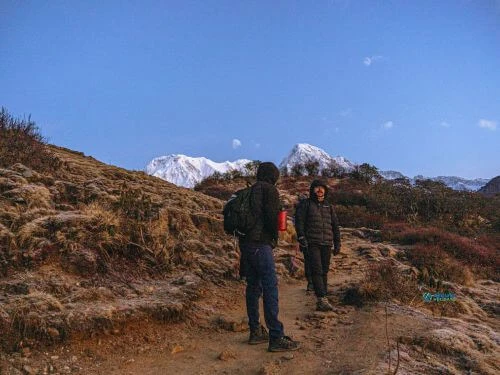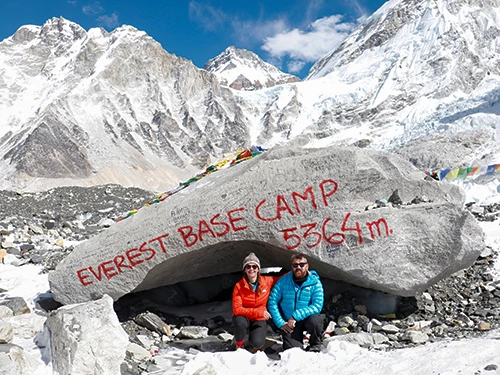The Manaslu Circuit Trek is a less-crowded, off-beaten path tea-house trek that encircles the mighty Manaslu massif in the Nepal Himalayas. On this 13‑day route, you’ll escape the crowds of the Everest or Annapurna trails and discover wild, unspoiled landscapes.
The journey begins in the lush lower valleys of Gorkha and winds you through the Manaslu and Annapurna Conservation Areas before culminating at the dramatic Larkya La Pass 5,160 m. Along the way, you’ll meet warm Gurung and Tibetan-Buddhist villagers, pass centuries-old monasteries. Gaze up at towering peaks, including Mount Manaslu (8,167 m).
Mount Manaslu is the eighth-highest mountain on Earth. Abound Holidays organizes this trek with experienced guides and complete logistics, so you can focus on soaking in the scenery and culture of one of Nepal’s most spectacular circuits.
Choosing the Manaslu Circuit means trading teahouse comfort for an authentic, remote adventure – and the rewards are immense. You’ll follow the Budhi Gandaki River up through dense pine and rhododendron forests, cross roaring mountain streams, and gradually gain altitude into a high Himalayan desert dotted with prayer flags.
Each day brings new views. From beautiful rice terraces and waterfalls near Jagat, to sweeping views of snow-capped Himalayas from the high camps. The sense of accomplishment at the pass. The 5,106 m Larke Pass (often called Larkya La) is unforgettable, with 360° views of peaks like Manaslu, Annapurna II, Himlung, and Cheo Himal.
This trek is more awe-inspiring. Its vintage monasteries, rugged terrain, and authentic Tibetan-influenced villages make it a once-in-a-lifetime journey. And because it follows a ring around the mountain, every morning brings a new angle on Manaslu itself. It helps to keep you immersed in this Himalayan giant from start to finish.
What Makes Manaslu Region Trekking Unique?
The Manaslu region is renowned for its rich biodiversity and deep cultural heritage. Trekking here, you’ll pass through subtropical forests at lower elevations. Then rise into alpine meadows and stark glacial valleys. All while circumnavigating a single mountain (Manaslu).
The terrain and climate shift dramatically, so you might start the day under jungle canopies and end it gazing at ice-clad summits. This variety makes the scenery incredibly rewarding. Expect dense emerald forests, cascading waterfalls, and lakes like Pungyen reflecting the massifs.
Along the way, you traverse traditional villages such as Namrung, Lho Gaon, Samagaon, and Samdo. The places where the houses are built with slate roofs and prayer flags flutter from every chorten (stupa). These villages are inhabited by Gurung and Tibetan-origin communities. They follow Buddhist customs, offering a glimpse into centuries-old mountain life.
Wildlife lovers will also appreciate Manaslu’s remoteness. The conservation area is home to Himalayan pheasants, blue sheep (bharal), and even the elusive snow leopard and musk deer. At higher camps, you may spot mountain goats on the cliffs, and the birdlife includes colorful Himalayan griffons and lammergeiers.
In fact, the trek is “an route through Buddhist villages and isolated valleys”. All the way to Larkya La Pass, through Himalayan foothills to the high and challenging Larkya (Larke) La pass. It is an experience that feels both serene and majestic.
This mixture of cultural richness and natural beauty – Himalayan villagers in maroon robes, mani stone walls inscribed with mantras, and towering frosty peaks – is what makes Manaslu trekking truly unique.
Manaslu Circuit Trek Difficulty: How Challenging Is It?
The Manaslu Circuit is considered a difficult, high-altitude trek. It involves long days (often 6–7 hours of hiking) on steep, uneven trails. You’ll climb steadily from about 900 m at Machha Khola to the 5,106 m Larkya La Pass. It means dealing with thin air and potential altitude effects.
For this reason, adequate acclimatization is built into the itinerary (including rest days at Samagaon and Sirdibas). Day hikes, such as to Manaslu Base Camp, are optional to help your body adjust.
Physically, you should be in good shape. You must do regular cardio training (hiking, biking, swimming). These are highly recommended beforehand.
Most trekkers follow a 14–16 day schedule. So that they can keep daily treks under 6–7 hours and allow time to adapt. In snowy seasons (spring or late autumn), the pass can be icy and windy. So stout boots and crampons may be needed.
Despite the challenges, Manaslu is very much a tea-house trek. It is not a technical mountaineering route. You won’t need ropes or climbing gear. You will just need sturdy trekking poles and boots for support.
Most days, you gain and lose a few hundred meters. That is often crossing streams via bridges or easy fords. Then ascending to colorful prayer flags or a ridge top. Because the trek is well-sequenced, no single day’s altitude gain is extreme (typically 500–700 m). The toughest day is usually the Larkya La crossing itself. You have to expect 8–10 hours out of Dharmasala to Bimthang via the 5,106 m pass.
But the payoff is a spectacular sunrise over the Himalaya. In short, the Manaslu Circuit trek demands endurance and mental grit. However, the trail infrastructure (comfortable lodges and a supportive Sherpa/guide team) keeps it doable for fit trekkers. Proper preparation for Manaslu Circuit trek, including training hikes and carrying only a light daypack, will get you up there safely.
Best Time for Manaslu Circuit Trek
Spring (March–May) and Autumn (September–November): These seasons are by far the best seasons for the Manaslu Circuit. In these months, daytime skies are usually clear. The temperatures are moderate, ideal for long mountain days.
Post-monsoon autumn is particularly favorite: The air is fresh with excellent visibility. The forest turns vibrant. The sunsets behind the peaks are unforgettable. Daytime highs can reach 15–20°C in the valleys. The nights (especially above 3,000 m) can drop below freezing.
Springtime is also excellent: As the snow melts, rhododendron forests bloom in brilliant reds and pinks. The trails are less crowded than in October. Mornings can be cool and foggy. However, afternoons tend to warm up nicely. In spring, you may even glimpse blooming wildflowers by Dharamsala.
Importantly, both spring and autumn carry minimal rain and avoid monsoon downpours. In contrast, trekking in winter (Dec–Feb) means very cold nights and a good chance of snow blocking Larkya Pass.
Summer (June–Aug) brings the monsoon rains: landslides are common. High passes may be impassable. For safety and fun, we stick to Oct–Nov and Mar–May departures.
Reaching the Larkya (Larke) Pass (5,106 m) is the pinnacle of the Manaslu Circuit. Prayer flags flutter beside the pass sign, welcoming you to the Manaslu Conservation Area and a breathtaking view of the Himalaya.
Manaslu Circuit Trek Cost
A typical Manaslu Circuit trek package from a reputable agency ranges roughly from USD 900 to 1,600 per person (for a 14–16 day trip). This price depends on group size and services. The premium operators may charge $1,400–1,800 for extra comforts.
In short, once you pay for your trek, your daily routine is worry-free – the only out-of-pocket costs on the trail will be hot drinks, snacks, and tipping.
We’ll review exactly what’s included and excluded when you book, so you can budget with confidence.
What to Expect During the Trek: Landscape, Culture & Highlights
The Manaslu Circuit Trek is more than just a physical adventure. It’s a journey through awe-inspiring natural beauty, deeply rooted traditions, and unforgettable moments. From the changing landscapes to the spiritual richness of mountain life. Every day offers something new. Here’s what makes this trek truly special:
Beautiful Landscapes:
- Begin in lush lowland valleys with rice terraces, waterfalls, and dense forests.
- Trek through rhododendron and pine woods, alongside the roaring Budhi Gandaki River.
- Ascend to high alpine meadows, glacial valleys, and rugged moraine fields.
- Witness stunning views of snow-capped peaks, including Mount Manaslu (8,163 m).
- Cross the dramatic Larkya La Pass (5,106 m) with 360° Himalayan panoramas.
Authentic Himalayan Culture
- Explore Gurung villages in the lower elevations with Hindu influences.
- Experience Tibetan Buddhist culture in higher-altitude villages like Lho, Samagaon, and Samdo.
- Visit ancient monasteries, spin prayer wheels, and pass mani walls carved with mantras.
- See traditional Tibetan-style homes, locals in traditional dress, and spiritual mountain life.
- Engage with locals and learn about centuries-old customs, festivals, and beliefs.
Memorable Highlights
- Summit Larkya La Pass, the most iconic point of the trek, surrounded by towering peaks.
- Visit Birendra Tal, a glacial lake near Samagaon with crystal-clear reflections.
- Optional acclimatization hike to Manaslu Base Camp for epic close-up mountain views.
- Enjoy warm hospitality in remote tea houses with hearty Nepali meals and evening fires.
- Capture once-in-a-lifetime moments with dramatic sunrises, prayer flags, and scenic valleys.

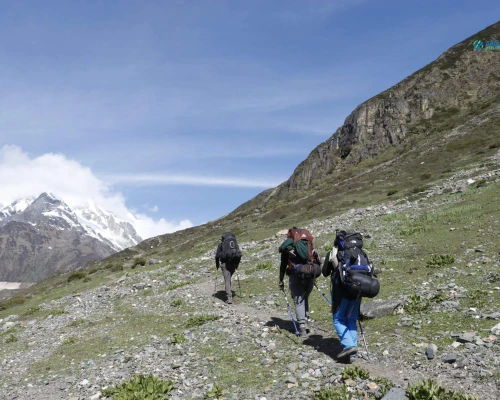
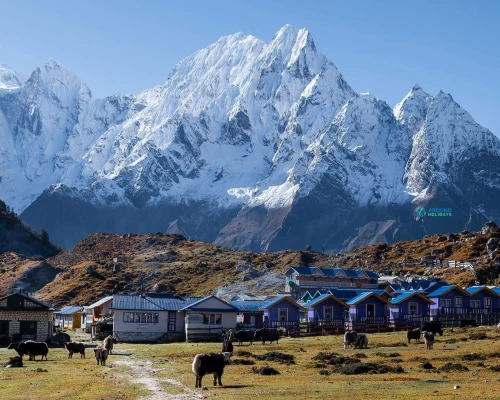
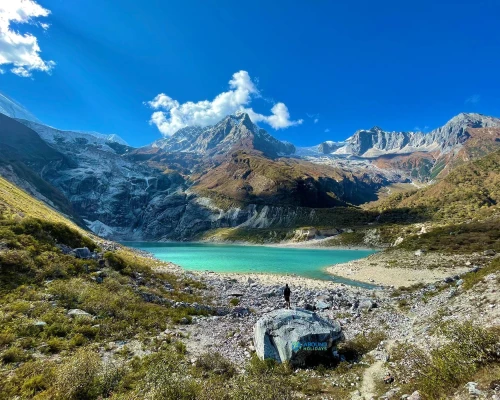
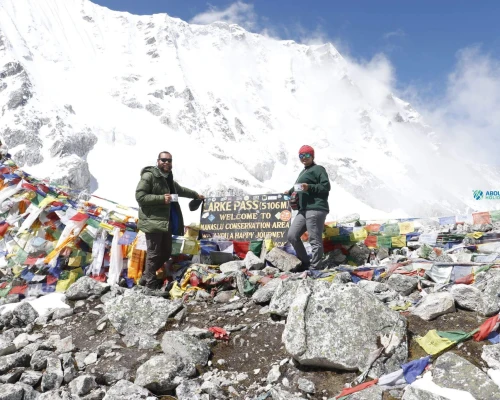
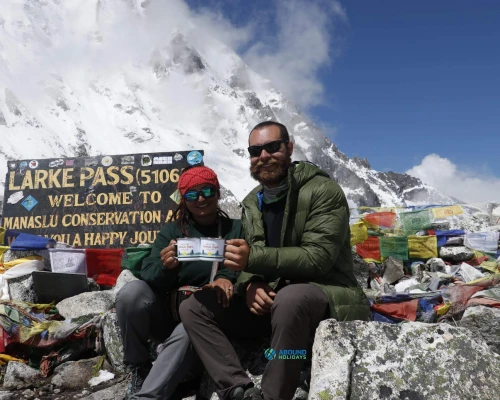
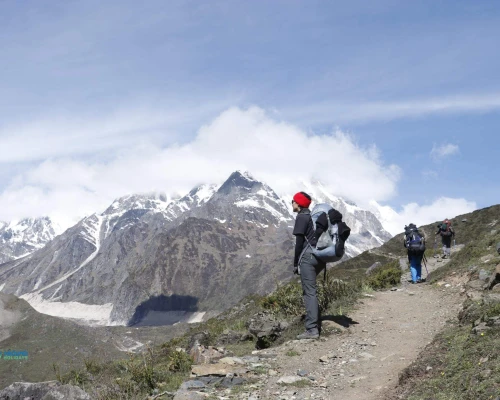
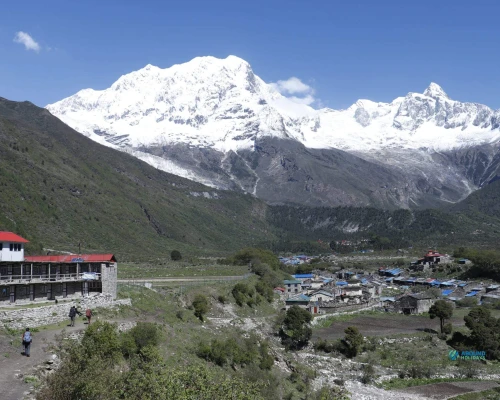
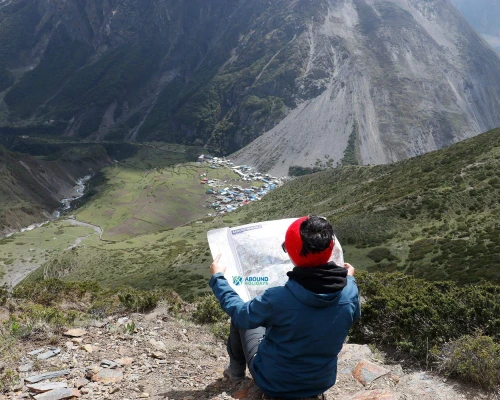
.webp)

 based on 5 reviews
based on 5 reviews